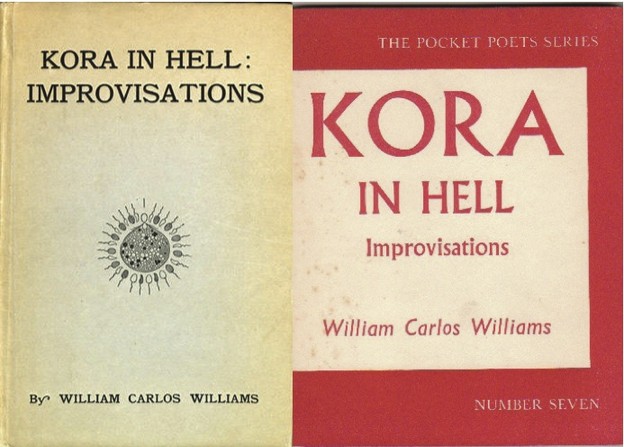The place of Kora

Typically when I teach William Carlos Williams’s sequence of improvisations Kora in Hell, we spend a lot of time on the name in the title: Kora, or Persephone, the mythological figure Williams takes up as a kind of avatar for his own struggle to break free of “the traditionalists of plagiarism” and come up to the surface of the new. As he says in I Wanted to Write a Poem: “I am indebted to Pound for the title. We had talked about Kora, the Greek parallel of Persephone, the legend of Springtime captured and taken to Hades. I thought of myself as Springtime and I felt I was on my way to Hell (but I didn’t go very far).” Williams almost offers an odd reversal of the myth, in which we usually understand Demeter, the grieving mother, to withhold the harvest and therefore bring an end to spring; here, Kora the daughter controls that action.
With Kora this summer (and we’re still in the summer quarter at Bard MAT, despite it being after Labor Day), we began with the third word of the title: Hell. More specifically, one student asked, where is Hell? From the course blog:
I was struck at first by the immediate sense of place in the epic’s title. Kora in Hell. It could easily be “Kora in Yonkers” “Kora in the Supermarket.” This seemed a typical Williams-ism, focusing on a specific location. Yet Kora’s Hell soon becomes far more expansive than the freeze-frame small-town portraits we’ve seen in so much of Williams’s verse thus far. We encounter references to Calcutta and Tenochtitlan, Hacketstown and Amsterdam. Hell could be Europe, it could be anywhere outside New Jersey, it could be the entire universe, Jersey included. […] Hell could very well be the un-American old country, but this sort of torment seems rather confined and personal, expressed only in these writings. Webster Schott [in the introduction to the New Directions edition of Imaginations] writes of Williams writing as his “dancing” (5), an obvious allusion to the man’s “Danse Russe.” In movements unobserved, he provides these “reflections of the day’s happenings” (3), unpacking the tumult of daily life. I spent a lot of time in these readings searching for connections, between the different stanzas, within the stanzas themselves, between the roman-numeralled parts (I somehow think that Williams would prefer this inelegant, inescapably American appelation to the ostentatious, Pound-ian ‘canto’). What can we find in terms of consistency, emotional or thematic or idiomatic? Perhaps Hell is fluid.
This blog post cut to the heart of a central tension in this course between Williams’s America as a concrete, historically particular place, and his own relationship to tradition.
Against the weather: On teaching Williams